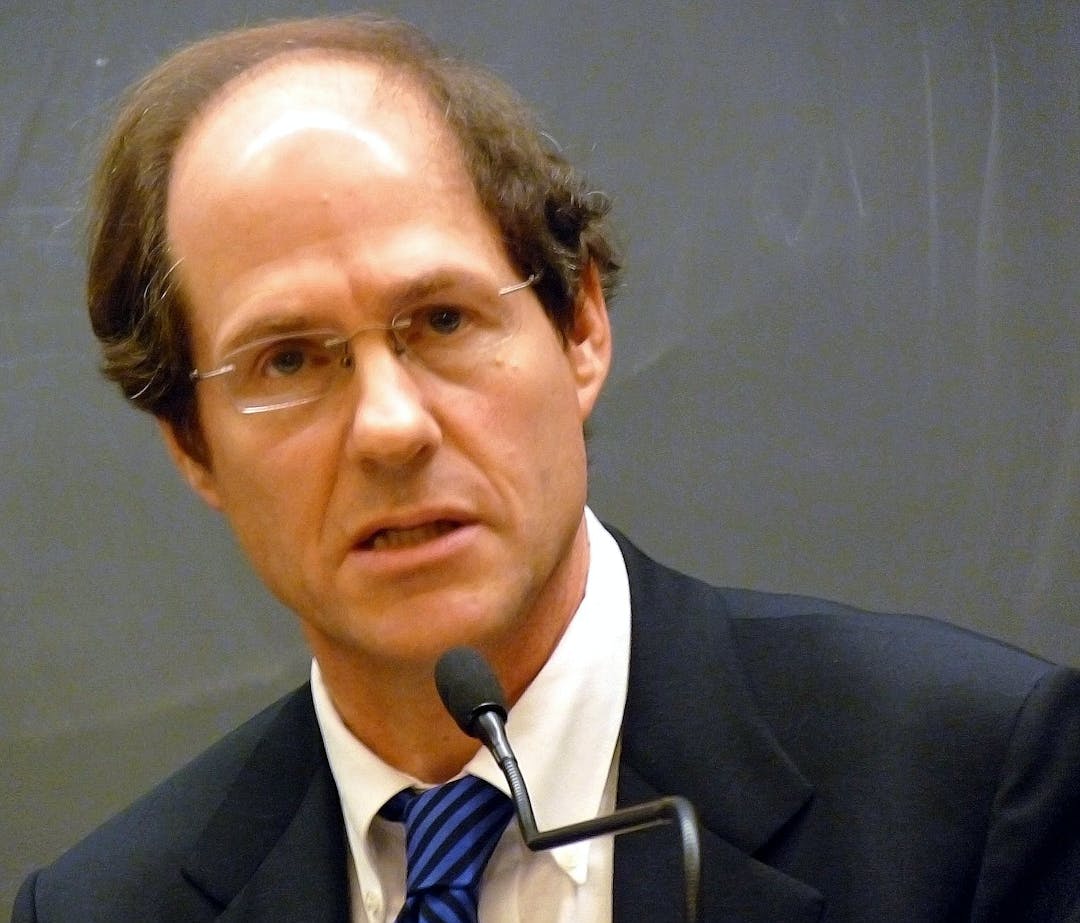Uri Gneezy
Breathing Life Into Economics
Intro
Uri Gneezy is an economist, behavioral scientist, innovative strategist, entrepreneur, professor and author of the critically acclaimed book,The Why Axis. He is particularly interested in the ways habits are formed and the effectiveness of incentives.1 He relies on experimental economics to better understand real-life behavior, which has led his work to more closely align with behavioral economics than traditional economics. Early on, Gneezy understood that while economic theories were useful, they often failed to explain real human behavior. Instead of trying to prove or test theories, Gneezy begins his work by observing behavior and then coming up with questions that the field of economics has not adequately addressed.2 His simple empirical demonstrations show the power of cognitive biases and the intersection between the human psyche and behavior.3 Uri Gneezy is often accredited as one of the leading figures of behavioral economics, especially when it comes to innovative thinking and experimental economics.4 His academic research spans various disciplines and continues to challenge the social sciences to more accurately depict real-life behavior.4 Gneezy understands that for economic principles to be effective, they must take psychological matters into account.
Here’s the big takeaway: if you want people to adopt new behaviors, the best tool is a one-two punch of social norms and pricing, which work as complements and build on each other.
- Uri Gneezy in The Why Axis
On their shoulders
For millennia, great thinkers and scholars have been working to understand the quirks of the human mind. Today, we’re privileged to put their insights to work, helping organizations to reduce bias and create better outcomes.
Psychological Effects of Incentives
Economists have long believed in the power of incentives. Traditional economic models are based on the idea that humans behave according to perfect rationality, which means that the higher a reward is, the more effort an individual would be put into being able to obtain that reward. A company wanting to boost the productivity of its employees, for example, can use incentives to nudge behavior. Parents who want their kids to perform well in school can offer them monetary compensation for every A grade they receive. Uri Gneezy realized, however, that incentives do not always lead to desired behavior. External incentives given by others, such as money, can diminish intrinsic motivation, which makes the incentive backfire. In order to explain why incentives don’t always work, Gneezy, in his paper “When and Why Incentives (Don’t) Work to Modify Behavior,” divided the effects of monetary incentives into two separate categories.5 Monetary incentives have a standard direct price effect when people are more motivated to perform a task because they will receive money for it, which is the effect that traditional economists focused on in their research. However, Gneezy explained that there is also an indirect effect to monetary incentives: a psychological one, which he named the “crowding-out effect.”5 Uri Gneezy identified two different ways that incentives could ensue the crowding-out effect. For one, he suggested that people may associate incentivized behavior with difficulty.5 If a student is told they will receive money if they obtain an A, they may be led to believe that achieving that goal would be really difficult and require a lot of effort. Additionally, if someone’s parents have made that deal with them, they may believe that their parents don’t think it’s likely that they will obtain the grade, and that is why an incentive is necessary. Due to the external incentivization, the task begins to seem too difficult and could cause someone to not even bother trying. The other way that the crowding-out effect might come about, according to Gneezy, is known as the overjustification effect.5 The overjustification effect explains that if originally we performed tasks because we enjoyed them and were intrinsically motivated to perform them, after an external motivator is offered to us, we tend to become less interested in performing that task. While we may continue to perform the task when the reward is being offered, once the external incentivization disappears, our intrinsic motivation diminishes. Gneezy’s insights into incentivization demonstrated a more holistic understanding of behavior. While economic models consider only the current situation, Gneezy showed that behavior is not just a product of current incentives. This idea had implications not only for economists, but for education, prosocial behavior, and lifestyle habits, all areas in which Gneezy conducted experiments.5
Gender and Competition
Uri Gneezy recognized that traditional economic models often treated everyone the same, with the belief that everyone behaved like a homo economicus. Homo economicus is a hypothetical model in which individuals are assumed to make decisions based on perfect rationality. However, Gneezy argued that it was not only cognitive biases that cause behavior to deviate from this model, but also, that factors such as gender can impact behavior.6 While this might not seem like a hot take, it was for old-fashioned traditional economics that treated all consumers the same. Statistics show that men tend to have more high-profile jobs and that there still exists a gender wage gap, despite the fact that gender equality has become a big concern in the workplace.6 Gneezy identified two common arguments that people commonly make as to why this occurs. The first is that there are difference in abilities and preferences between genders and the second is that there is discrimination in the workplace and women and men are treated differently. However, Gneezy wanted to offer up a third argument that would help explain why these gaps exist. Gneezy, alongside his colleagues, suggested that women may be less successful than men in traditionally competitive environments, in his paper “Performance in Competitive Environments: Gender Differences.”6 Gneezy’s argument was based on the basic idea that “girls, when shielded from competition with boys, have a higher chance of developing their skills and interests in science” (1050).6 Although Gneezy had seen hints of an explanation of this sort in evolutionary psychology, he found that there was little-to-no experimental evidence. As a result, he decided to conduct a series of experiments to see whether his argument would stand strong. In each experiment, groups of three men and three women were asked to perform a task which required them to solve computerized mazes. In the control experiment, the reward that participants received were based solely on their own performance: they received money for each maze they solved. In this experiment, Gneezy and his colleagues found that gender did not have an impact on performance. However, to create a more competitive environment, in the next experiment, a reward was instead only promised to the participant who would solve the most mazes. In this condition, the average performance of men increased while the average performance of women remained the same.6 It may not be that women perform any worse in competitive environments, but rather that men perform better when competing against people of the opposite gender. Gneezy also wanted to see whether the kind of competitive environment mattered: would women perform better if they were in a competitive environment with only other women? To test this theory out, which is often used as an argument in favor of single-sex schooling, Gneezy repeated the experiment with single-sex groups. Instead of performing within a mixed group, women were now competing against five other women to solve the computerized mazes. In this condition, Gneezy found that women’s average performance was much better than when they were in mixed groups.6 Gneezy believed that there could be a number of reasons for the behavior he observed in women. For one, he suggested that if women believe that men are more skilled in the task, whether it be true or not, they may expect to lose and therefore not try as hard. Another explanation Gneezy offered was the “stereotype threat.” The stereotype threat suggests that if women believe that there is an overall consensus or stereotype that women are worse at computerized mazes, this additional pressure of trying to disprove the stereotype actually causes them to choke under pressure.6 A later paper that Gneezy co-authored, “Gender and Competition at Young Age,” suggested that the same effects exist in competitive environments with young girls and boys.7 By examining a group of elementary children racing short distances, Gneezy found that while the average speed of girls and boys had negligible differences when students raced alone, when a girl raced alongside a boy, the boy’s time would improve while the girl’s would remain the same.7 These experiments again showed that while males’ performances change when an element of competition is involved, females’ do not.
Historical Biography
Uri Gneezy was born June 6, 1967, in Tel Aviv, Israel. He spent his childhood in Israel, learning game theory on the streets.4 Game theory examines strategic interactions among decision-makers, but instead of examining this simply through mathematical models, Gneezy observed the everyday. Examining the way that people around him made decisions helped spark his interest in rationality and economics, causing him to pursue a degree in economics at Tel Aviv University.2 He graduated with a Bachelor of Arts before moving to the Netherlands to continue his education. In the Netherlands, Gneezy got both his M.A. and PhD from the University of Tilburg at the Center for Economic Research.2 Although he began his PhD with the intent of focusing on game theory, Gneezy quickly found that it did not suit him - it was too mathematical.8 As he furthered his education, Gneezy became interested not only in the theory of economics but also how it could be applied to real-life situations, which led to his interest in experimental economics.8 After completing his own education, Gneezy took up academic positions at various institutions. He was a faculty member at the University of Chicago, the Israel Institute of Technology, and Haifa University, as well as a visiting professor at the University of Amsterdam Center for Research in Experimental Economics and Political Decision Making.2 Gneezy currently continues his post at the University of Amsterdam, but his full-time position is as a Professor of Economics and Strategy at the Rady School of Management at the University of California, San Diego.2 He is also recognized as the Epstein/Atkinson Endowed Chair in Management Leadership. These endowments are given to distinguished faculty who facilitate exceptional student experiences.9 Gneezy also regularly writes for the Freakonomics website, a multi-platform project that seeks to provide insights into everyday economics. In 2014, Gneezy founded Gneezy Consulting, a business consultancy that specializes in behavioral economics,2 alongside his wife Ayelet Gneezy. Their mission is to strategically help businesses reach their goals with recommendations based on concrete evidence and causal relationships found in behavioral science, much like The Decision Lab.10
Insights from Uri Gneezy
Uri Gneezy conducted a great deal of research examining both incentives and gender differences. While these two fields are separate, Gneezy believed his findings from each could inform how to motivate behavior. He suggested, based on decades of research and experiments, that “given the right culture, women are as competitively inclined as men, and even more so in many situations. Competitiveness, then, is not only set by evolutionary forces that dictate that men are naturally more so inclined than women. The average woman will compete more than the average man if the right cultural incentives are in place.”11 Instead of simply studying incentives from an economic perspective, Gneezy stated that “when you’re deciding whether to motivate someone, you should first think about whether your incentive might crowd out the willingness to perform well without an incentive.”11 Perhaps there are some incentives that crowd-out women’s willingness, which is why Gneezy urged for the right kind of cultural incentives based on gender as well. For Gneezy, treating all humans as though they would behave the same, common in traditional economics, was bound to lead to faulty models. He said that “when you simplify assumptions, you are often very wrong.”12 For Gneezy, traditional economics is too concerned with mathematics and models at the expense of examining real-life behavior. Instead, to him, being a “behavioral economist means someone that actually tries to understand how people behave.”8 Uri Gneezy also believed that his economic insights could help inform public policy. He suggested that the “important lesson [for public policy] is to try and change the way people think… in any process that you’re implementing, try to think of the behavior of people, the psychology of people… even if it’s going to help people on paper, it might not in reality”.8 Gneezy believes behavioral economics is going to move away from identifying how to change behavior in the short-run and begin to find ways to change behavior long-term. He used the example that “we know that if in the buffet we put tomatoes in the front and the bacon in the back, people will be likely [to pick the healthier option]. But, to make people actually eat healthier [long-term], that’s a much bigger challenge than to have a local change.” 8
Where can I learn more?
Uri Gneezy’s most well-known book is called The Why Axis: Hidden Motives and the Undiscovered Economics of Everyday Life, which he co-authored with fellow economist John List. In this book, the two authors take readers along the adventures they embarked on in order to show how people really behave. They went from the foothills of Kilimanjaro to California, from India to Chicago, all to provide insights into which incentives actually work for different groups of people.4 Although that is his only published book, Gneezy has written dozens of interesting papers. A number of them are available on the Rady School of Management’s website. You can also check out the articles that he has written for Freakonomics here. If you prefer a good podcast, you might want to check out this episode by the Smart People Podcast. In the episode, Gneezy gives his insights into how behavioral economics helps us understand motivation as well as the science behind the pay-as-you-go model. You can also check out some highlights from the speech he gave at the Graduate School of Economics’ 29th lecture, “Incentives and Behavior Change,” here.
References
- Rady School of Management. (n.d.). Uri Gneezy. Retrieved December 20, 2020, from https://rady.ucsd.edu/people/faculty/gneezy/
- Peoplepill. (n.d.). Uri Hezkia Gneezy. peoplepill.com. Retrieved December 20, 2020, from https://peoplepill.com/people/uri-gneezy/
- Uri Gneezy Profile. (2018, August 16). SPEAKING.com Keynote Speakers Bureau. https://speaking.com/speakers/uri-gneezy/
- Amazon. (n.d.). The Why Axis: Hidden Motives and the Undiscovered Economics of Everyday Life. Retrieved December 20, 2020, from https://www.amazon.com/Why-Axis-Undiscovered-Economics-Everyday/dp/1610393112
- Gneezy, U., Meier, S., & Rey-Biel, P. (2011). When and why incentives (Don't) work to modify behavior. Journal of Economic Perspectives, 25(4), 191-210. https://doi.org/10.1257/jep.25.4.191
- Gneezy, U., Niederle, M., & Rustichini, A. (2003). Performance in competitive environments: Gender differences. The Quarterly Journal of Economics, 118(3), 1049-1074. https://doi.org/10.1162/00335530360698496
- Gneezy, U., & Rustichini, A. (2004). Gender and competition at a young age. American Economic Review, 94(2), 377-381. https://doi.org/10.1257/0002828041301821
- Gneezy, U. (2018, January 18). INTERVIEW WITH PROFESSOR URI GNEEZY. Interview by E. Ung. Behavioural Economics. https://behaviouraleconomics.pmc.gov.au/podcasts/interview-professor-uri-gneezy
- Rady School of Management. (n.d.). Endowed faculty chairs. Retrieved December 20, 2020, from https://rady.ucsd.edu/invest/endowed-chairs/
- Gneezy Consulting. (n.d.). Retrieved December 20, 2020, from https://www.gneezy.com/
- Goodreads. (n.d.). Uri Gneezy Quotes. Retrieved December 20, 2020, from https://www.goodreads.com/author/quotes/6908006.Uri_Gneezy
- Smart People Podcast. (2014, November 3). EPISODE 164 – URI GNEEZY. https://www.smartpeoplepodcast.com/2014/11/03/episode-164-uri-gneezy/
About the Author
The Decision Lab
The Decision Lab is a Canadian think-tank dedicated to democratizing behavioral science through research and analysis. We apply behavioral science to create social good in the public and private sectors.





